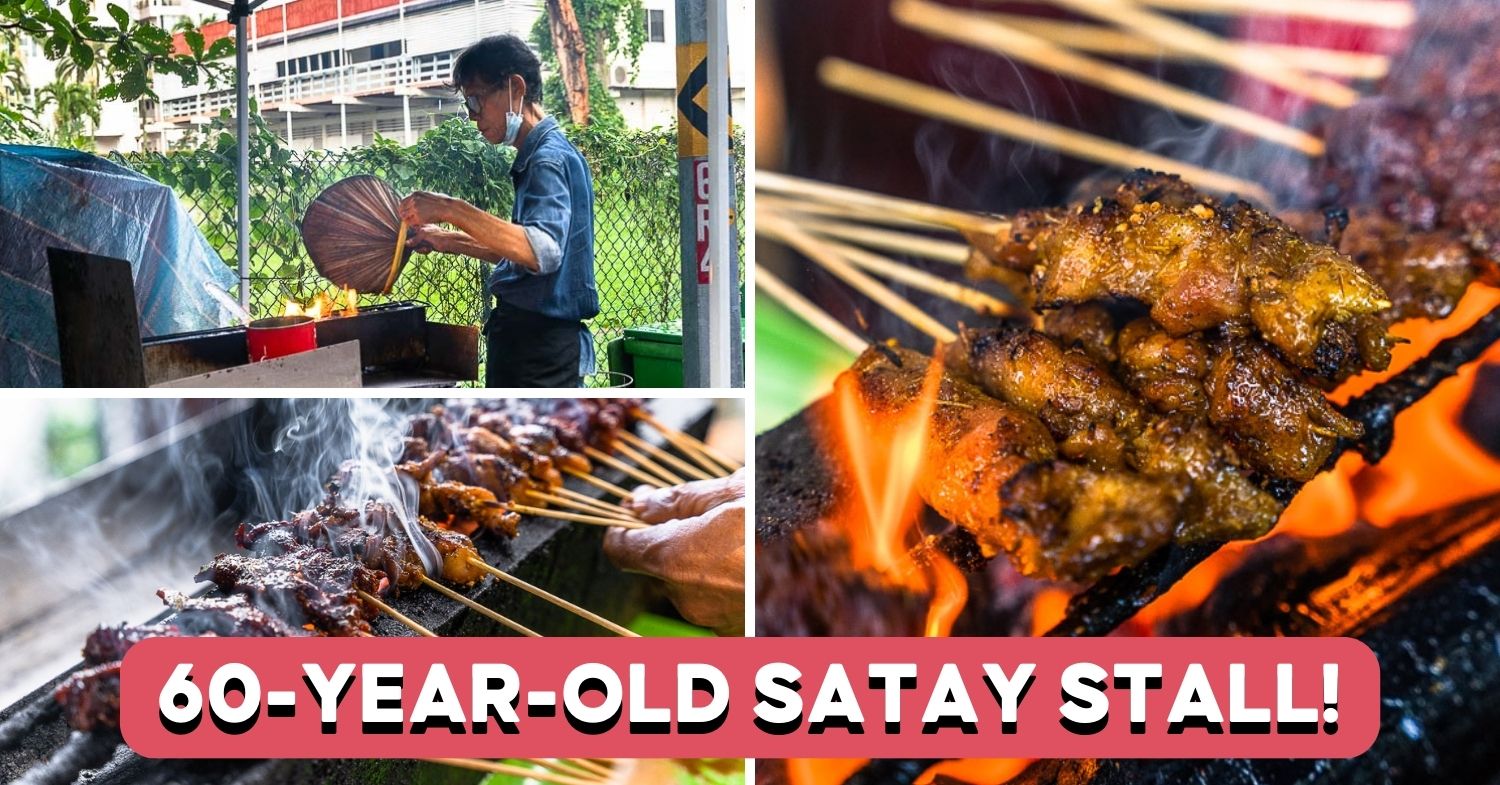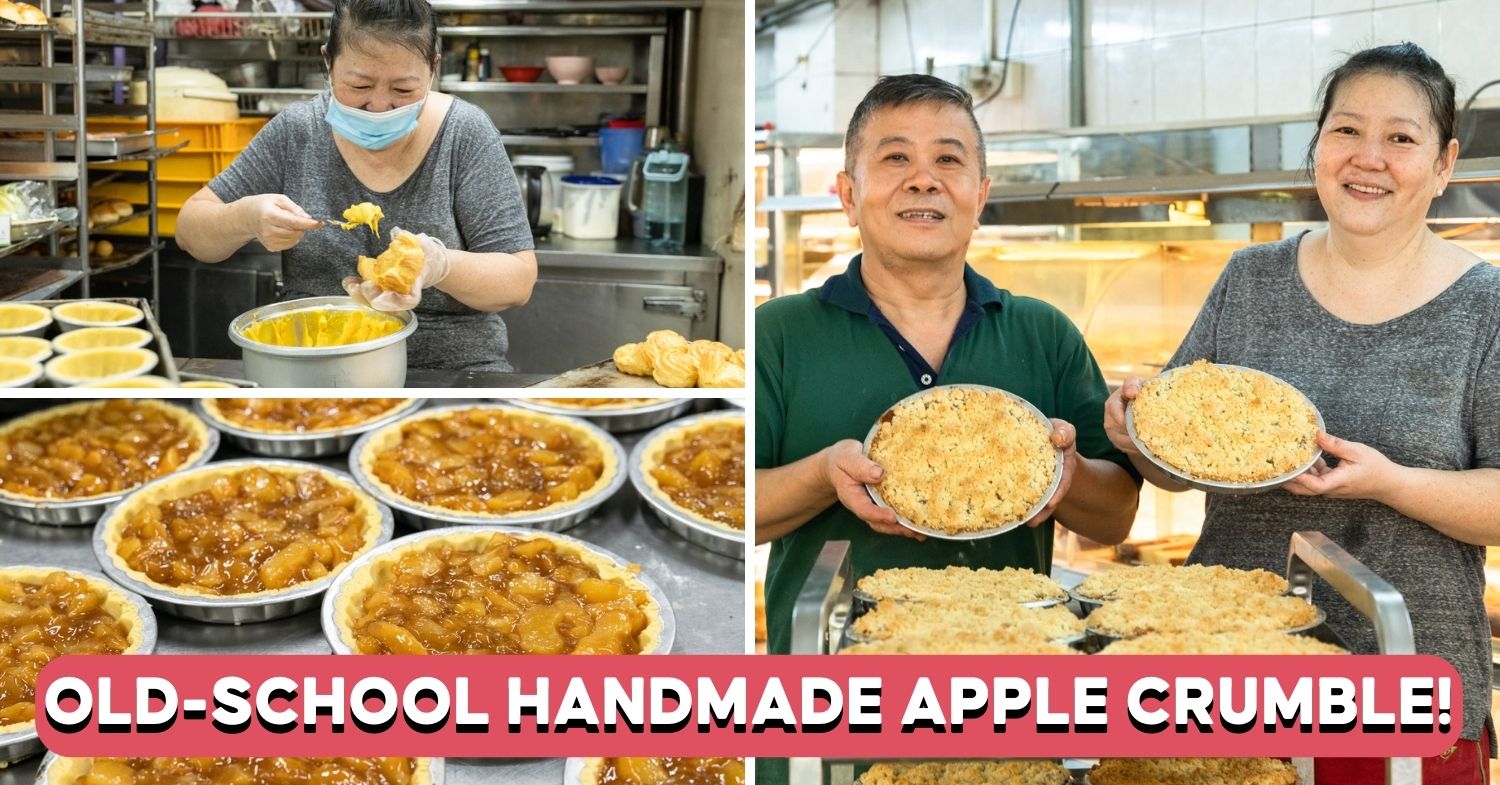How did Sichuan and Chongqing dishes become so popular in Singapore?

For dishes that most Singaporeans were unfamiliar with before the 2010s, the ever-growing popularity of mala xiang guo, Chongqing grilled fish, chuan chuan and other such eats is staggering. These dishes, which can be broadly categorised as mainland Chinese food, are more than just trends now—they’re a force to be reckoned with in Singapore’s food scene.

But how did we get to this point? How did flavours like mala go from trend to a permanent fixture on our supermarket shelves and hawker centres? To find out the answer to these questions, we delved into research and spoke to the people behind hawker stalls and restaurants that had a hand in popularising these flavours.
This is how mainland Chinese food became mainstream.
The pre-mala era
Just as there is a before and after Elvis Presley when it comes to popular music, the story of mainland Chinese food in Singapore can be separated into before and after mala.
Prior to the mala trend picking up momentum in the mid-2010s, Singaporeans were largely unfamiliar with food from the mainland. Sichuan dishes and their intensely spicy flavours, for instance, were simply not the kind of Chinese food and flavours we were accustomed to.
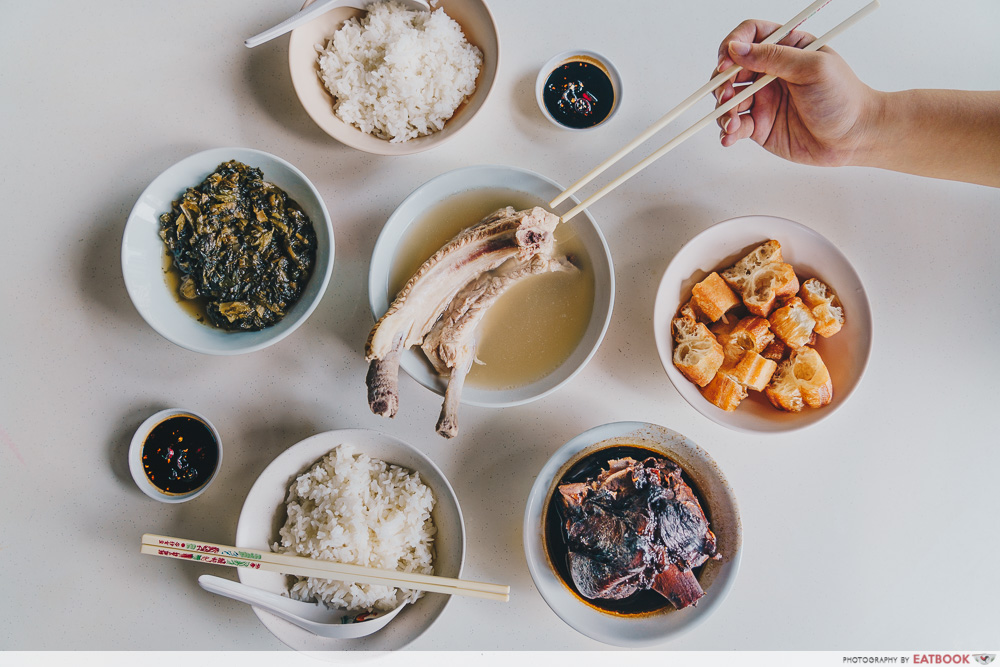
Singaporean Chinese dishes have their roots in the mainland, too. The key difference is that the 19th-century Chinese immigrants who developed those dishes in Singapore came from provinces such as Fujian and Guangdong, home to Hakka, Hokkien, Teochew, and Cantonese cuisines. These cuisines are known for having more subtle, delicate tastes. So while your bak kut teh and hokkien mee are obviously flavourful, they aren’t nearly as spicy or salty as Chinese dishes from a region like Sichuan.
These local dishes informed our Chinese food preferences for a long time. But culture is never static—as Chinese nationals from other parts of China arrived in recent decades, we naturally began seeing more eateries emerge that catered to their tastes.
Mala xiang guo: The ground zero
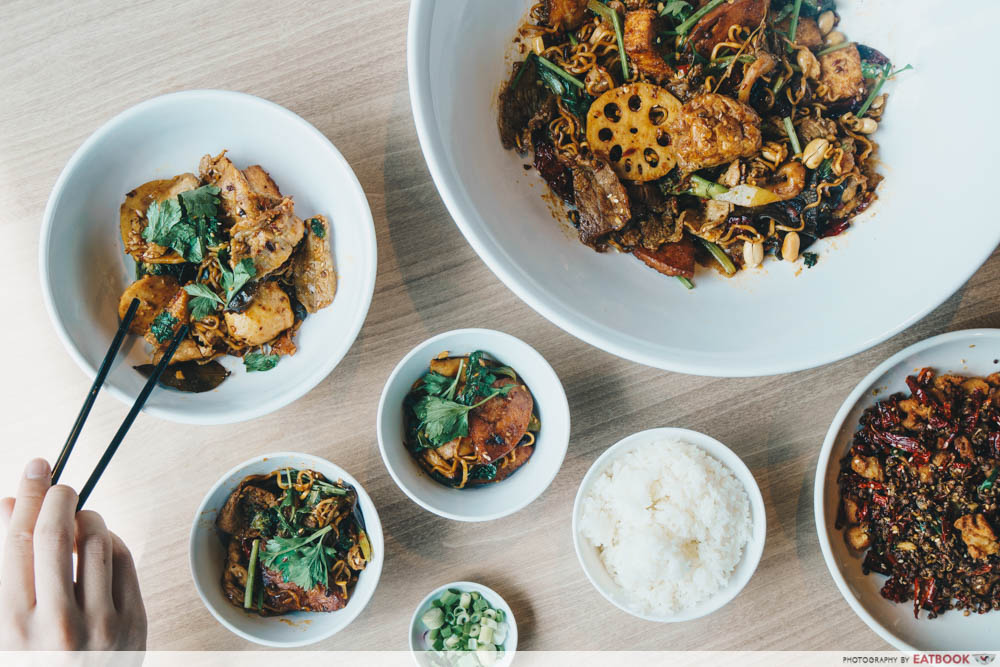
While there are a fair few varieties of mainland Chinese food available in Singapore today, none can boast the impact that mala xiang guo has on the public consciousness. The numbingly spicy seasoning made out of Sichuan peppercorn and chilli, coupled with the stir-fried ingredients of your picking, is what gives mala xiang guo its appeal.
According to several online sources, the very first mala xiang guo stall to open in Singapore was Piao Xiang Mala in 2009. Located in 313@Somerset’s Food Republic, the stall generated some intrigue for the dish and was quite successful. But it was not until a few years later that mala xiang guo would really take off.
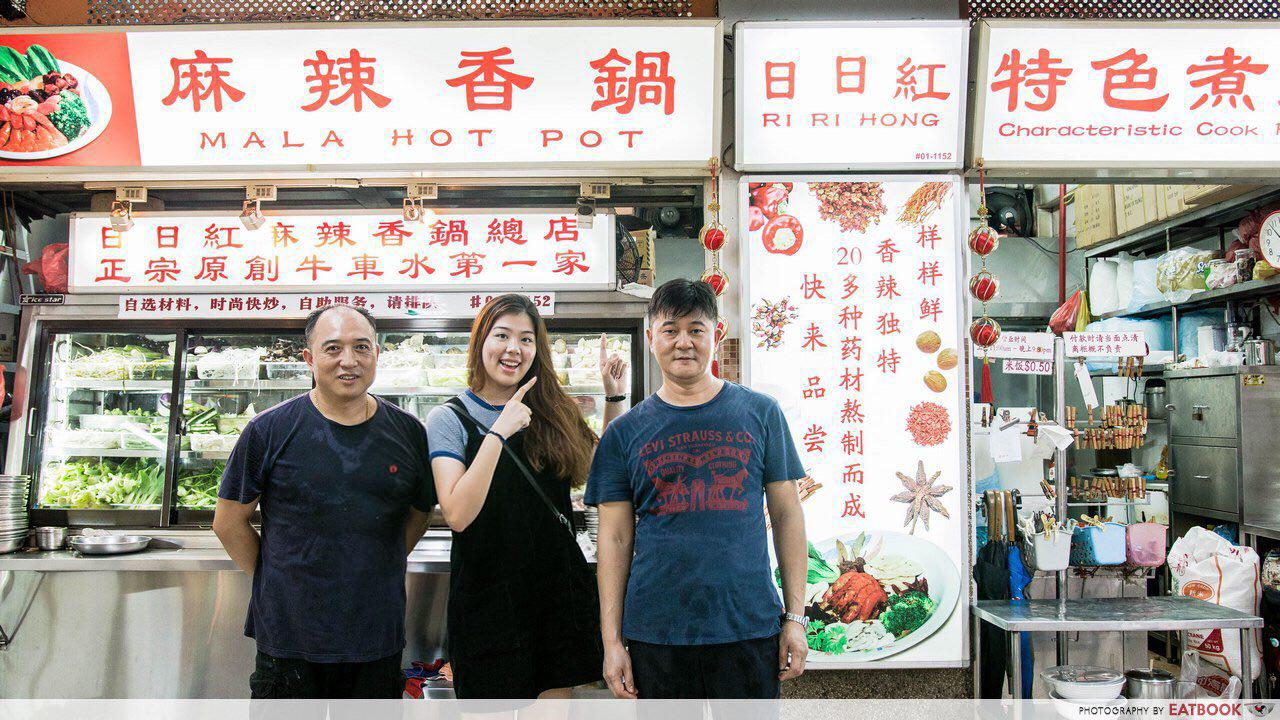
In 2011, Ri Ri Hong Mala Xiang Guo opened in People’s Park Food Centre. This stall would go on to gain a legendary status among mala fans, and still draws long queues to this day. But it wasn’t always this popular among Singaporeans, according to owner Mr Mao Cong Fang.
“Initially, most of our customers were Chinese internationals,” said Mr Mao. “The locals who did try our mala xiang guo suggested we use less oil and salt, and that it could be less numbing. We listened, and after 2013, we began to have more and more locals queuing up.”
“Now, locals make up about 70% of our customers.”
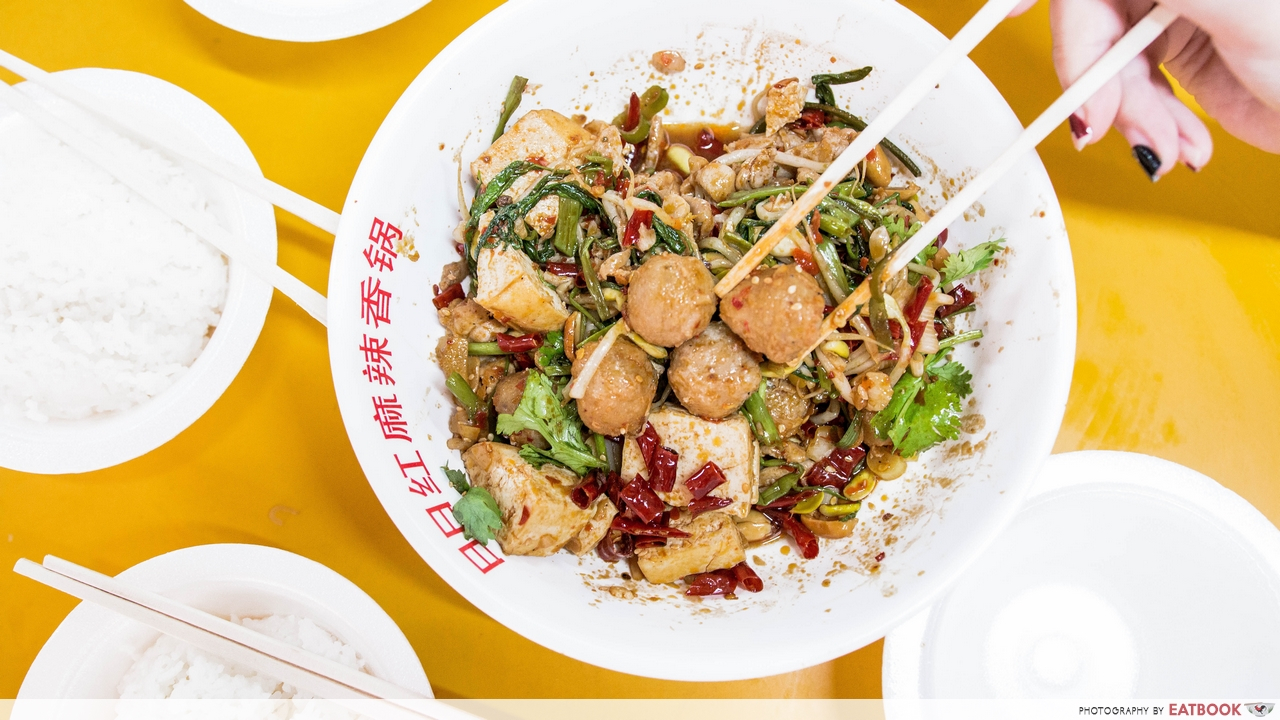
By adapting to feedback, Ri Ri Hong and other mala xiang guo stalls began making the dish more palatable to local taste buds. This in turn allowed the dish’s unique characteristics—its devilish spiciness, the numbing sensation that follows eating it, and choose-your-own-ingredients concept—to shine through.
For a nation already in love with spicy food, the intense mala xiang guo seemed like the next evolutionary step, or a challenge they wanted to surmount, especially with the different levels of spiciness one can choose from. And so it spread like wildfire—people flocked to mala eateries, and in response, mala eateries have mushroomed everywhere.
Mala hotpot: All about the experience
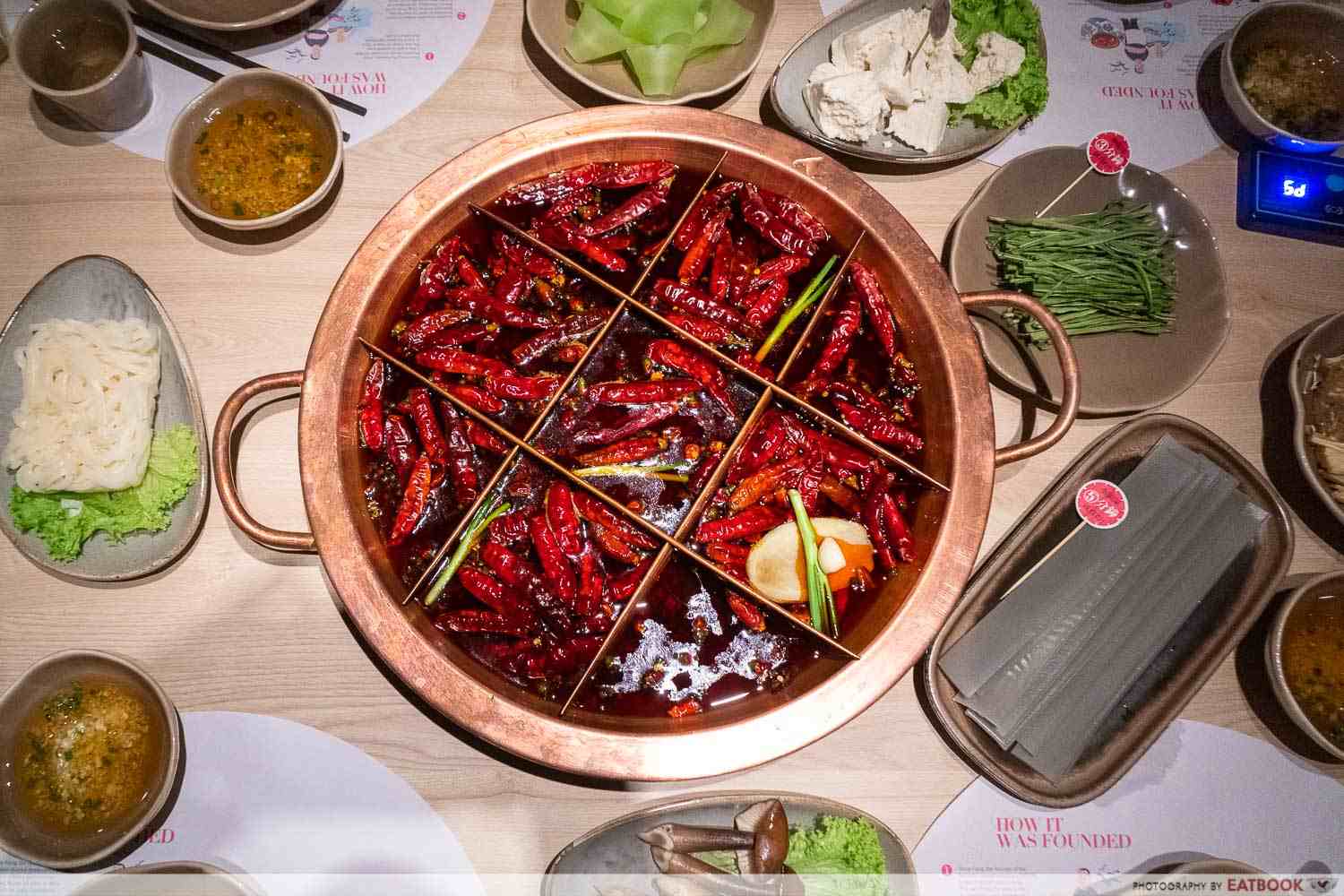
When talking about mala xiang guo, it’s impossible not to bring up its soupy equivalent: mala hotpot.
For those unaware, mala hotpot is actually the progenitor of mala xiang guo. Because mala hotpot is usually an extended meal and requires group of people to eat, the fit-for-one, easy-to-prepare mala xiang guo was created to be a convenient alternative.
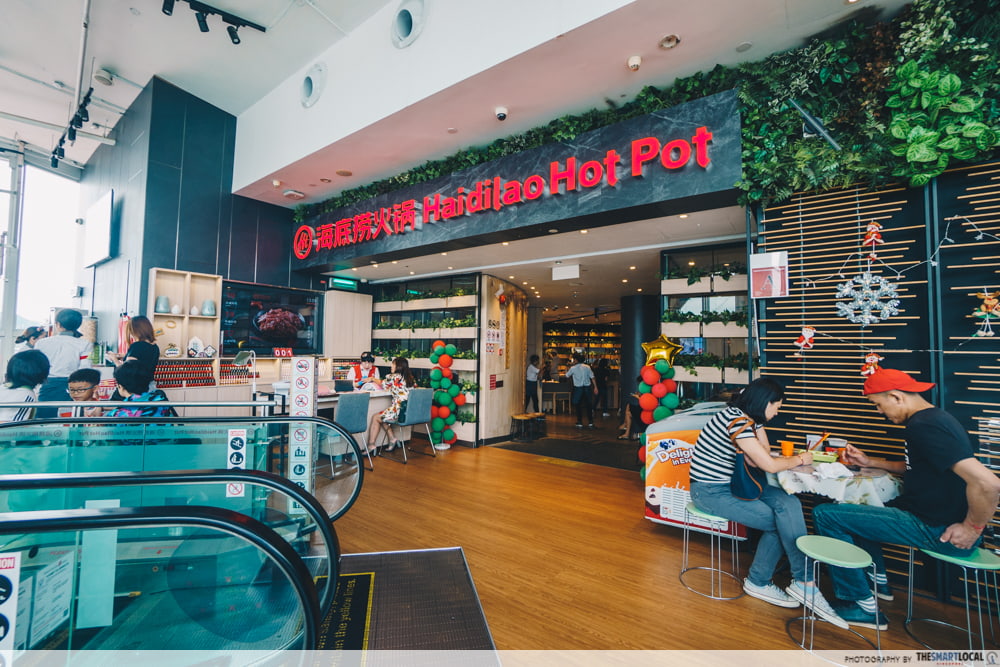
It’s hard to ascertain which eatery was the first to offer mala hotpot in Singapore, but Hai Di Lao, which opened in Singapore in 2012, was surely the first to turn it into something wildly marketable. Diners who tried Hai Di Lao for the first time were dazzled by elaborate customer service, which included manicures while waiting, noodle-pulling performances, and childrens’ playrooms. That eased customers into appreciating their Sichuan-style hotpot, which includes, of course, the mala soup base.

Image credit: HaiDiLao Singapore
After the success of Hai Di Lao, brands such as Beauty in The Pot, Xiao Long Kan Hotpot, Uncle Fong Hotpot and more followed suit, with many brands imported from China and Hong Kong.
10 Legit Sichuan Hotpot Restaurants In Singapore For Fiery Mala Broth, Including Buffets
Chongqing grilled fish and sauerkraut fish: The best of two worlds

We can see a link between the rise of mala and the emergence of Sichuanese and Chongqing fish dishes in Singapore. Mala helped familiarise Singaporeans with more spicy and intense flavours, opening the door for Chongqing grilled fish and sauerkraut fish, AKA suan yu, to cause a buzz with their own spicy and intense flavours.
One of the key players to offer these dishes is Jiumaojiu Group, who are behind arguably the most popular sauerkraut fish chain in Singapore, TAI ER, and also sister brand Beautiful Lai Grilled Fish. They explained to us the appeal of their offerings, and what makes these fish dishes so special:

“Tai Er’s sauerkraut fish presents a satisfying combination of flavours—spiciness and sourness. On the other hand, Beautiful Lai’s grilled fish also offers a spicy and hot flavour experience, but with the process of grilling involved.”
As mentioned earlier, local Chinese food tends to feature more subtle flavours. We see this in our fish dishes as well—go to any local Chinese restaurant and you’re likely to find lots of Cantonese-style steamed fish dishes prepared with more subtle tasting ingredients.
In contrast, sauerkraut fish is poached in a soup base made with Sichuan peppercorns and sauerkraut, giving it its explosive spicy and sour flavour. Chongqing grilled fish also gets its strong heat from Sichuan peppercorns, but is grilled rather than poached.

To Singaporeans who enjoyed eating fish and were quickly falling in love with mala, having Chongqing grilled fish or sauerkraut fish was akin to seeing two of your favourite rom-com characters get together. It’s no wonder that these dishes are as popular as they are today, with brands such as the aforementioned two, TANYU, YAO YAO Sauerkraut Fish and more drawing large crowds each day.
YAO YAO Sauerkraut Fish Review: Famous Chinese Suan Cai Yu With XXL You Tiao Now In Singapore
The future of mainland Chinese food in Singapore
With the popularity of the aforementioned dishes, we’re likely to continue seeing an even more diverse range of Chinese eateries opening here. Aside from the dishes discussed above, eateries that specialise in chuan chuan, BBQ, hybrid concepts and more have gained plenty of traction.
But as a cuisine gets integrated into another culture—in this case, the melting pot called Singaporean food—we begin to see its dishes evolve according to the milieu. This process already began when mala xiang guo was adapted to better suit local taste buds, and will continue as time goes on.
The owner of Ri Ri Hong Mala Xiang Guo seems to agree with this sentiment. “The uniqueness and diversity of mala may help it become a local delicacy in the future,” Mr Mao noted.
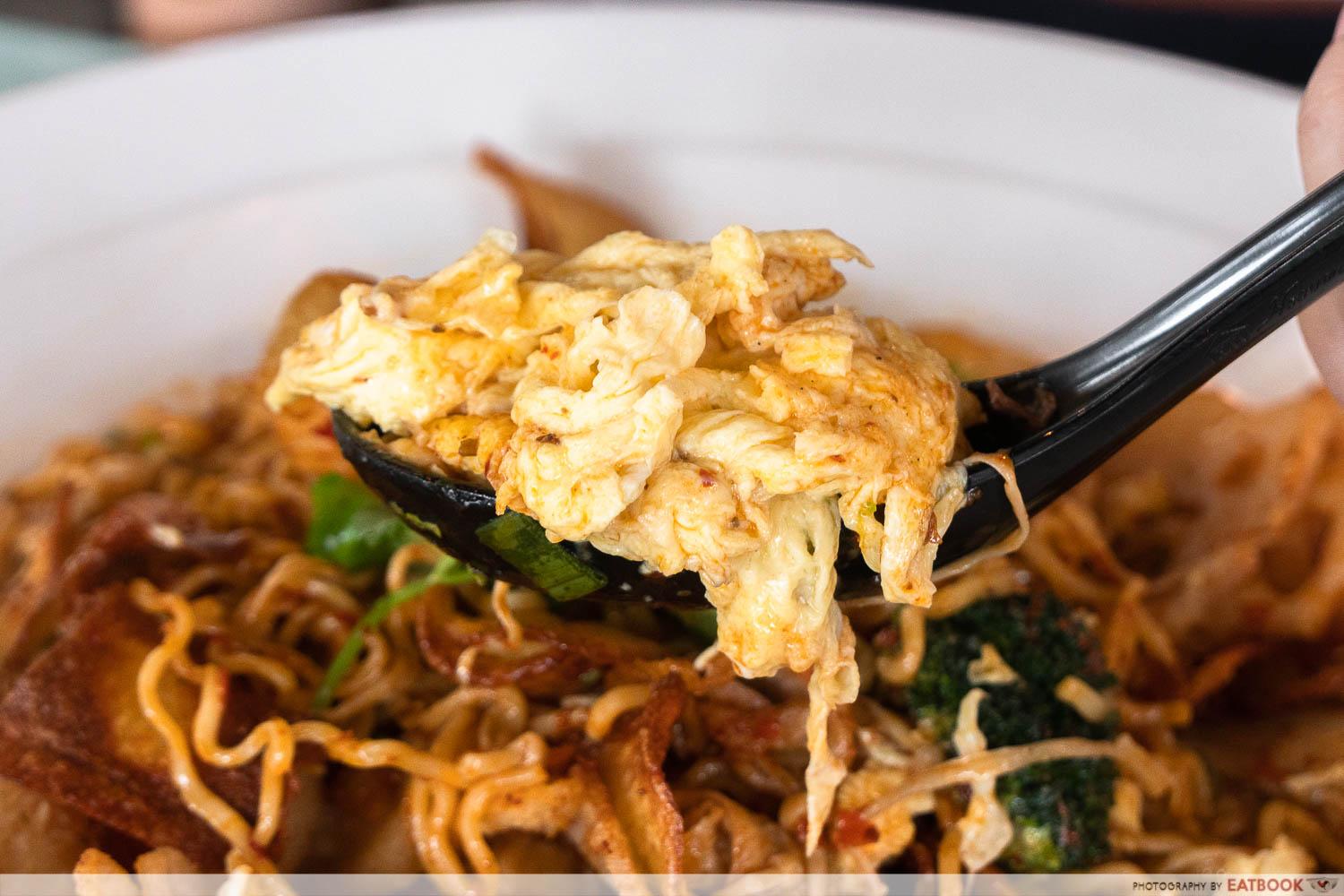
Mala has been adapted to croissants, ramen, and even snacks—chips flavoured with the numbing seasoning have become classic snacks or souvenirs that tourists pine after. Mala xiang guo eateries opened by locals, such as A Hot Hideout, have innovated with the dishes themselves by combining them with collagen soup, scrambled eggs and more.
As a nation built by immigrants, Singapore’s food has been heavily influenced by the diverse cultures that arrived in its early days. It is only natural, then, that this new wave of Chinese cuisine is already leaving its indelible mark on our food history.
For a look at how chicken rice became Singapore’s national dish, read our chicken rice history feature. For a story about local Gen Z farmers, check out our Yili Farm feature.
Ri Ri Hong Mala Xiang Guo
Address: 32 New Market Road, #01-1152, People’s Park Food Centre, Singapore 050032
Opening hours: Mon-Sat 10am to 9:30pm, Sun 10:30am to 9:30pm
Ri Ri Hong Mala Xiang Guo is not a halal-certified eatery.
Beautiful Lai Grilled Fish
Address: 3 Temasek Boulevard, #B1-111, Suntec City, Singapore 038983
Opening hours: Mon-Fri 11:30am to 2pm, 5pm to 9pm
Tel: 6322 4396
Website
Beautiful Lai Grilled Fish is not a halal-certified eatery.
TAI ER
Website | Full list of outlets
TAI ER is not a halal-certified eatery.

Drop us your email so you won't miss the latest news.

